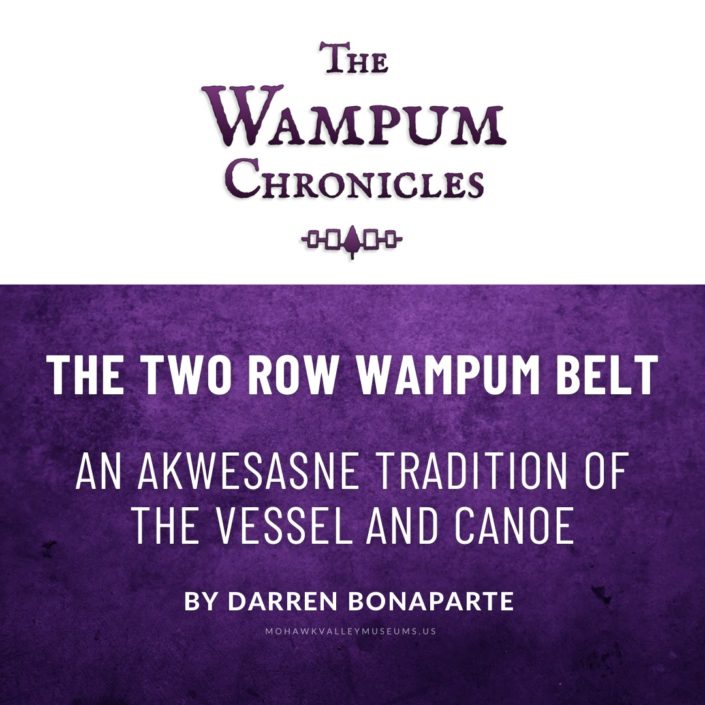
The St. Regis Mohawk School and the Cultural Revival of 1937
(Originally published in The People’s Voice, July 1, 2005)
Written by Darren Bonaparte
When the St. Regis Mohawk School opened its doors in September of 1937, it did so in an atmosphere of cultural revival and pride in Akwesasne. That summer there was a Grand Council of the Iroquois Confederacy held here, as recounted by the Massena Observer:
The old constitution of the League of the Iroquois would serve as a splendid document for a world peace plan of today which would unite all English speaking people, according to Charles Davis, England, who spoke at the colorful conclave of the Six Nations at Hogansburg yesterday afternoon.
With a blazing sun overhead, a crowd of about 300, composed mainly of St. Regis Mohawk Indians but with a considerable sprinkling of white people, heard Mr. Davis C. E. D., England, a peace advocate, explain that not until he had formulated his plan did he learn that it was almost an exact duplicate of the constitution adopted by the Five Nations back in 1570.
In the literature and programs distributed among the Indians the gathering was described as the first ceremonial celebration convened by the grand council of the Six Nations days since pre-revolutionary days.
In the background hovered Mrs. Laura Cornelius Kellogg, executive secretary of the Six Nations, of Seymour, Wis. A dynamo of driving force, Mrs. Kellogg whipped the program into action, assembled the 30-odd visiting chiefs for the press photographers, and did considerable speaking herself, both in English and Mohawk. Striking American words and phrases occasionally punctuated with her Indian address.
She said that the League of Nations in Europe did not have the majesty of the Iroquois league of nations and that the basic idea of the Iroquois banding together to prevent future wars, made them the most powerful group in American of that day. She said the ultimate object of the present movement is to revive the Iroquois league of nations until it eventually takes in all tribes…
Another speaker was Chief George E. Thomas of Onondaga, the Tadodarho of the Iroquois Confederacy. George Thomas was a noted Carlyle athlete who had played on “Pop” Warner’s football team with Jim Thorpe. He introduced many of the visiting chiefs as well as a local chief, James Deer, who was even more of a legend, having performed as a strong man and trick rider all over the world in circuses and “wild west” shows, and having been part of a British expedition that conquered the rapids of the Nile to save the beleaguered General “Chinese” Gordon at Khartoum in 1884.
Chief Deer had passed out from the heat but was “revived sufficiently” for his own part in the day’s activities:
Chief Deer strode onto the platform accompanied by two venerable Indians, all clad in full feathered regalia. Later his daughters, Running Deer and Princess White Deer, also in costume, joined the platform crowds.
Their Indian garb contrasted with heavy use of lipstick and mascara to combine the old and the new.
In a colorful finale Davis was invested as a member of Iroquois and given the name of Safe Keeper of the Council Fire as he as admitted into the Snipe clan.
Chief Deer got out the peace pipe and each puffed upon it, after which the Indian draped a gaudy blanket over Davis’ shoulder and put on the feather head-dress. Davis, an elderly man, who had been sitting in a temperature of 120 degrees, perspired visibly under the heavy woolen blanket.
Princess White Deer sang Indian songs, and Running Deer gave an original blanket dance. The gathering was partly adjourned when Chief Deer again stepped up to the mike and reminded his audience how he had helped conquer the Nile at Khartoum.
When the St. Regis Mohawk School opened that fall, the Massena Observer ran a series of stories about the opening, the appointment of a new principal, and the school’s first music program, in which “Everyone seemed eager to participate in the atmosphere which reflected cheerful, happy joy.”
Solomon Cook, then a high school student in Massena (with a New York State educational award under his belt), gave a speech to the students that noted the advantages their new school had. He said that he regretted not having the same opportunity when he was their age.
Mr. Cook pleaded for an attitude that showed ambition, application, appreciation, and a motto, “Doing the Best Better.” His talk was an inspiration for all who heard it.
Following Mr. Cook’s talk, three fifth grade pupils sang solos. They were: first, Edgar Jock, and he sang “That Silver Haired Daddy of Mine”; second, Harriet Ransome, “Prisoners Dream:” the last was Belson Tarbell, “Darling Think of What You’ve Done.” These solos captivated the attention of every listener, and the resulting applause provided a true expression of sincere appreciation.
At this point in the program, Julius Cook, fourth grade Service Club leader, addressed the student body in a grown-up manner, stating the purposes and progress thus far made in the club. His talk was naturally effective. It was direct, personal and to the point.
Mr. Faddin, sixth grade teacher, was next on the program. He played harmonica while Alfred Terrance, assisted him on the Jew’s harp. After two selections Mr. Faddin proved he had more ability up his sleeve. His excellent whistling imitation of bird calls convinced the entire audience that he was an expert imitator and a lover of nature.
Mr. Faddin is of course Ray Fadden, and he had even more up his sleeve than that. He was also an avid collector or Native American artifacts and tribal lore, all of which he would use to inspire his students to learn more about their culture.
Fadden’s enthusiasm was contagious, and the Massena Observer returned to document his amazing collection of over 50 wampum belt reproductions, stone axes and arrowheads from the mound builders of Ohio, French trade beads found near Oneida lake, a tomahawk from the French and Indian War, a beaded blanket made by Tuscaroras, moccasins made by Sitting Bull’s niece, and other items to numerous to mention.
In January of the following year, Fadden contributed an article to the Massena newspaper under the title “Indians Have Contributed Much to Civilization.” He was out to educate the general public in addition to his sixth-grade class…and succeeded on both counts. His students, who are now our elders, were lucky to have him.
Next in series: Akwesasne’s First Newspaper and the “Return” to Traditional Government
By Darren Bonaparte, historian and author of The Wampum Chronicles. Reprinted with permission.
Darren Bonaparte is a cultural historian from the Akwesasne First Nation. He is a frequent lecturer at schools, universities, museums, and historical sites in the United States and Canada. He has written four books, several articles, and the libretto for the McGill Chamber Orchestra’s Aboriginal Visions and Voices. Darren is a former chief of the Mohawk Council of Akwesasne. He is the creator of The Wampum Chronicles and historical advisor to film and television. He currently serves as the Director of the Tribal Historic Preservation Office of the Saint Regis Mohawk Tribe.














